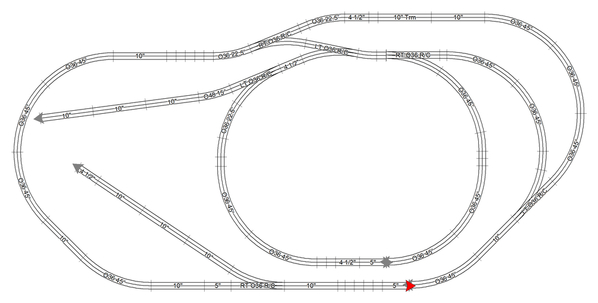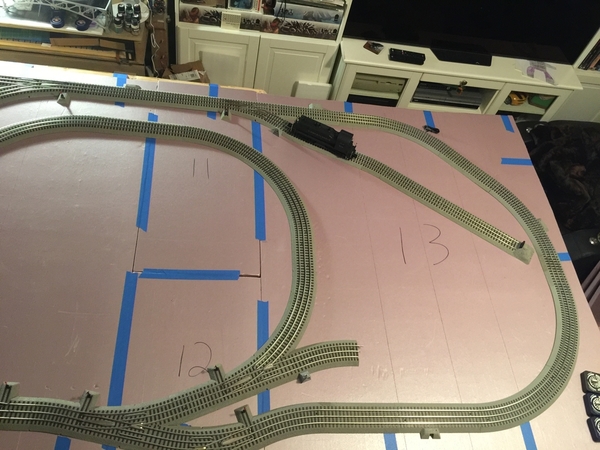Good Morning All,
My name is Anthony and I am working on customizing an o gauge fastrack layout I found online. I am new to o gauge and the fastrack system and I’m running into some problems selecting the right tracks to complete the layout. I just downloaded the SCARM custom software to test out the idea I have and I can’t seem to connect the loops. I was wondering if someone out there would be able to help me finalize this layout with the correct pieces that will complete the layout or a similar layout. I’m looking to fit this onto a 9 x 5 or slightly smaller board.
I would purchase the ‘Missy Delight’ track pack layout because it seems cost effective for the switches and I would then purchase additional individual tracks needed to expand the design so I can run two trains at once. Then I would park two other trains on the runoffs. The top runoff would curve under the outer path which will be elevated at that point. I would also be willing to use other track systems instead of Fastracks, if my engines would be supported and it would make completing this layout easier. Should I also consider using multiple power tracks to make sure there is enough juice throughout the layout? I’ve attached photos of the Missy Delight layout and the SCARM layout I’m struggling with so you can get an idea of what I’m trying to accomplish and possibly help me identify which specific tracks I can use to complete this design. I would really appreciate someone’s help with completing this layout. I would like to also add bumpers to the two runoffs and one of those 1 inch fastrack power switches I’ve seen on eBay for each runoff. This why I can park other engines there and cut the power off.
Searching the internet for help I just learned about turning radiuses for specific engines. Here are the engines I have. Please let me know if any of the turns in my design will be too sharp for them. Thank you all!
Lionel O GP-38 #905 Union Pacific LionChief Plus Locomotive
Lionel Lionchief plus # 6-84251 AT&SF 2-8-4 Berkshire steam locomotive
Lionel DC Comics Batman Phantom Train Set - O-Gauge
Lionel O Gauge DC Comics Batman Lionchief M7 Subway Electric Train Set LNL681475
Anthony



























